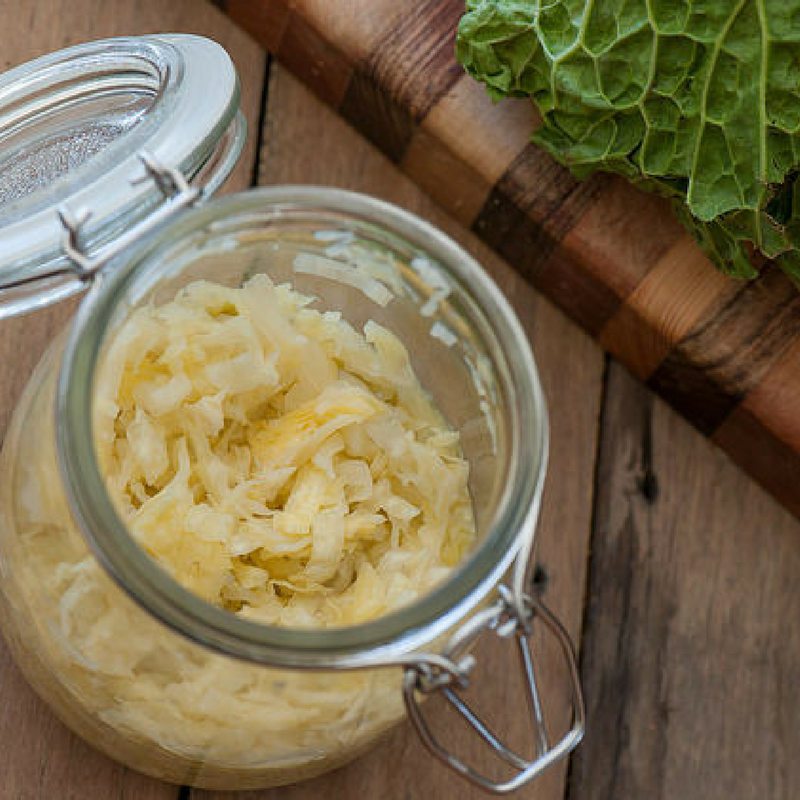Sauerkraut is one of the easiest things to have in your fridge and it's use as an "all-rounder" to add to any dish is one of the reasons I love it so much. Added to eggs for breakfast, in a salad at lunch or with dinner - there's no reason not to include this into your daily diet.
Sauerkraut is a great way to incorporate probiotic bacteria within the diet. It is cabbage that has been fermented and comes with an abundance of health benefits. The best part is, it’s easy to make, affordable and you are able to create your favourite combinations knowing exactly every ingredient you are putting into it.
Cabbage is rich in antioxidants, especially vitamin C. Red cabbage in particular contains anthocyanin compounds that produce the red/purple colour, increasing the overall antioxidant status of the kraut. It’s also rich in glutamine, essential for gut healing, and it’s anti-inflammatory. Fermented foods are alkalizing, helping to restore the body’s pH balance – as the modern-day diet can be so acidic as a result of highly-refined/processed products and sugary foods. The combination of gut-healing and probiotic bacteria makes this an amazing addition to the diet for healthy glowing skin.
Enjoy this easy to make at home recipe!
Lily x
What You'll Need:- 2 outer cabbage leaves
- ½-1 cabbage head shredded (red/purple cabbage is packed with all of the additional antioxidants!)
- Depending on what's in your fridge or what you like, try mixing and matching carrot, apple, ginger, fennel seeds, fenugreek, mustard seeds, turmeric, beetroot, lemon/lime zest, or chilli, or garlic.
Method:
In a mixing bowl combine cabbage with your favourite combination of additional extras (or have on its own). Massage the cabbage down until it has softened completely. It will start to form a juice at the bottom of the bowl. In a glass/air-tight jar press cabbage down so it is tightly packed in the jar. Use the outer leaves to form a seal over the cabbage and press down firmly, ensuring there is minimal air space. If there’s a bit of space between the cabbage and lid try using a shot glass or something similar to press down and seal glass jar shut.
Place the jar in a room temperature spot, away from direct sunlight and excessive heat. A bit of warmth is okay as this will encourage the fermentation process. Leave for a minimum of 3 days, the longer it is left the tangier the flavour will become. In warmer months, I will leave it for 5 days whereas during winter I can leave it up to 10 days. It is completely up to you!
You can include a starter culture (such as the body ecology culture starter) to increase the numbers of probiotic bacteria and enhance the fermentation process, however it’s not essential. Once refrigerated, the sauerkraut continues to ferment at a slower rate and lasts in the fridge for months.
Donna Gates (founder of the Body Ecology Diet) suggests having ½ cup with each meal to support a healthy gut microbiome. You can eat this alongside most savoury dishes, or snack on it with some organic blue baked corn chips! For anyone experiencing histamine issues it’s best to consult with a nutritionist or naturopath first before trying this out.
Image credit: Jules Stone Soup via Flickr

